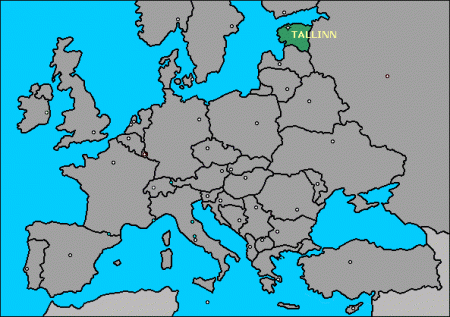July 27, 2016 – With a population of 1.3 million Estonia hugs the Gulf of Finland and lies just to the west of Russia (see the country demarcated in green on the European map below). It is tiny compared to its eastern neighbour but its plans are to become much bigger without adding a hectare of territory. How? By creating e-residents.
What is an e-resident? A digital identity for a person or business operating online according to the Estonian e-Residency website.
What can an e-resident do? They can operate a business anywhere in the world but conduct it as if it were resident in Estonia. The only requirement is the business entity or individual establish an Estonian address.
How do you get that physical address? You contact one of five designated service providers. You come once to Estonia and establish a local bank account. And you declare Estonian taxes online.
e-residents receive a smartID card which gives them a digital identification for securing transactions. The digital signature provided by the card is considered the legal equivalent to a handwritten signature. The card comes with 2048-bit public key encryption and a microchip providing two security certificates which means users of the card need two PIN numbers, one for authentication and one for signing.
Besides making the country digitally bigger, why is Estonia doing this? To build an online digital society. The goal is to reach 10 million e-residents by 2025. The transactions these companies do online will be subject to Estonian tax law but in this case no tax will be incurred until distributions are made. e-residents will have European Union access since Estonia is a member and that means the ability to operate in that open market of 508 million.
How do you get a card if you don’t live in Estonia? Go to the website. Fill in the application. Pay 100 euros. You should hear back in about 10 business days. You’ll then be invited to visit an Estonian embassy or consular office closest to you (currently the country has representation in 35 countries around the world) to complete the process and get your e-resident ID. Right now applying and receiving e-residence in Estonia is taking less than a month.
One would think that every kind of shady operation would apply for Estonian e-residency particularly since Russia to the east has a reputation for money laundering and other nefarious financial schemes. But so far that has not been the case. It may still happen based on recent events when Russia launched a cyberattack on the country after a Soviet war memorial was moved from its location in the capital city of Tallinn. To counter the threat Estonia backs up its data to multiple servers distributed around the globe including a significant operational centre in the United Kingdom.
Since launch in December of 2014, Estonia has added e-residents amounting to 10,000 individuals, over 1,000 companies, and coming from 128 countries. Currently 23,000 receive the e-resident newsletter so I suspect many more will soon make little Estonia a much bigger digital Estonia.
















